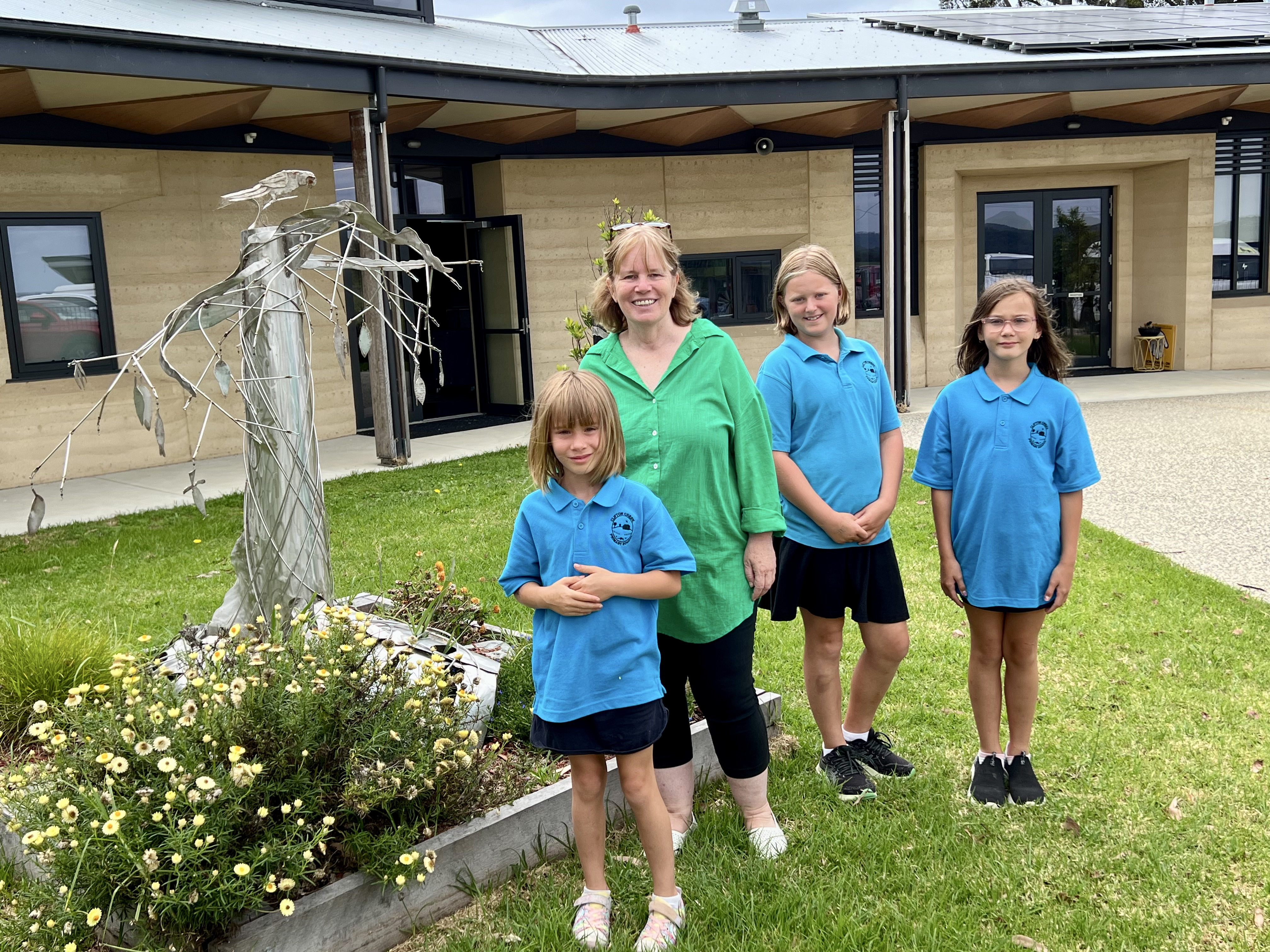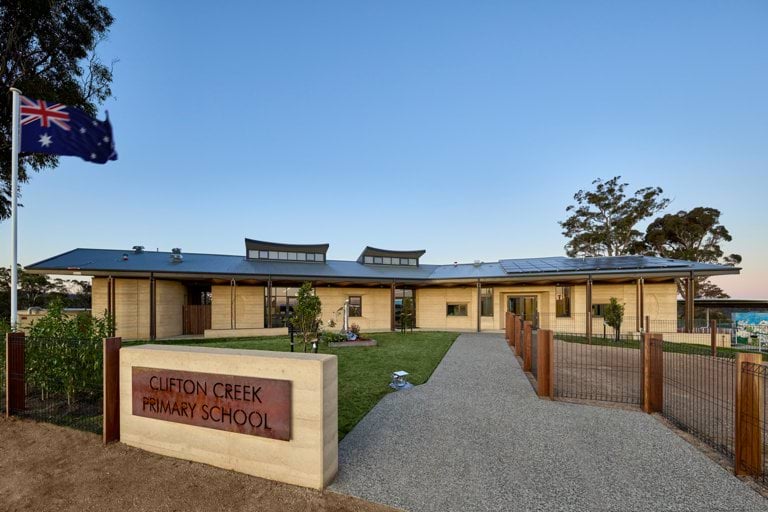From devastation comes hope – and a new, energy-efficient school
05 March 2024
When Clifton Creek Primary School received its first electricity bill in credit, business manager Ellyn McKenzie let out a whoop.

"In 2019, our electricity bills were consistently higher than $1000 a quarter," Ellyn says. "To now have no bills or low bills is amazing."
While the higher bills were partly due to a metering problem the previous year, the school's most recent quarterly bill was $290 – less than a third of what they've previously paid – even without factoring in energy price rises. The school regularly exports more power to the grid than it consumes.
It's a huge bonus for the tiny East Gippsland school, 300 kilometres east of Melbourne, which was rebuilt in 2022 after being razed in the Black Summer bushfires.
Principal Sue Paul remembers receiving a text message that confirmed the school was gone.
"I was devastated," Sue says. "We all were."
It was the night of 30 December 2019, and the region had been evacuated due to fire risk. The school, which had served the rural community since 1911, didn't stand a chance.
But from devastation came hope, and four years later, 38 students have started a new year, and Clifton Creek Primary School is stronger than ever.
"We did a lot of community consultation when we were planning the new school, and everyone wanted it to be sustainable," Sue says.
Architect AOA Christopher Peck designed the $4.27 million project, including rammed earth walls to improve the school's thermal envelope. He chose local Bairnsdale ochre sand and employed local trades, reducing the building's carbon footprint.

The new school design maximises the use of passive solar and includes solar panels, rainwater collection, and high-performance glazing. The design reinforces the school’s 100-year-long connection with its community and features that survived the fire, including a mural wall, mosaic sculptures, and the school bell, are focal points of the design.
With a low power supply and a sustainable water system, the school is almost entirely off the grid, vastly different to the poorly insulated portable buildings it replaced. Its design being equivalent to the five-star energy efficiency rating guidelines of the Green Building Council of Australia has not only reduced power bills but also made the entire school more comfortable.
"We've got huge windows and high ceilings, so for lighting, we're much better off," Sue says.
"The rammed earth walls keep everything much cooler on hot days and warmer in the winter. We have electric split systems, which we also had in the old school, but they'd be going pretty much all the time in the old school. We don't use them nearly as much now."
And the whole school community is happy knowing they’re creating positive change for the environment.
"The students know we're on solar and we're not burning fossil fuels, and that's a positive feeling for the whole community," Sue says.
Last year, the ground-breaking design for Clifton Creek Primary School won the Minister's Award for overall design excellence and Best School Project - below $5 Million Award in the 2023 Victorian School Design Awards. The judges commended the design for harnessing a sense of renewal and history, including the retained features and Gunaikurnai designs imprinted on the walls.



